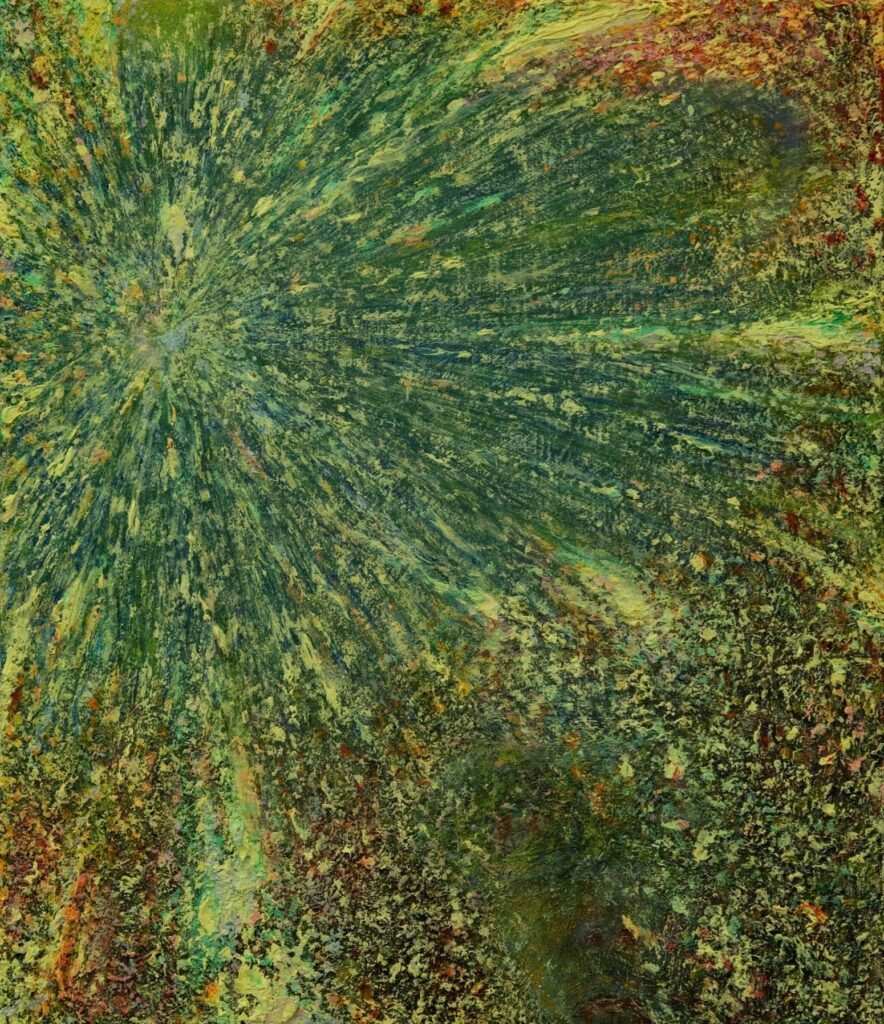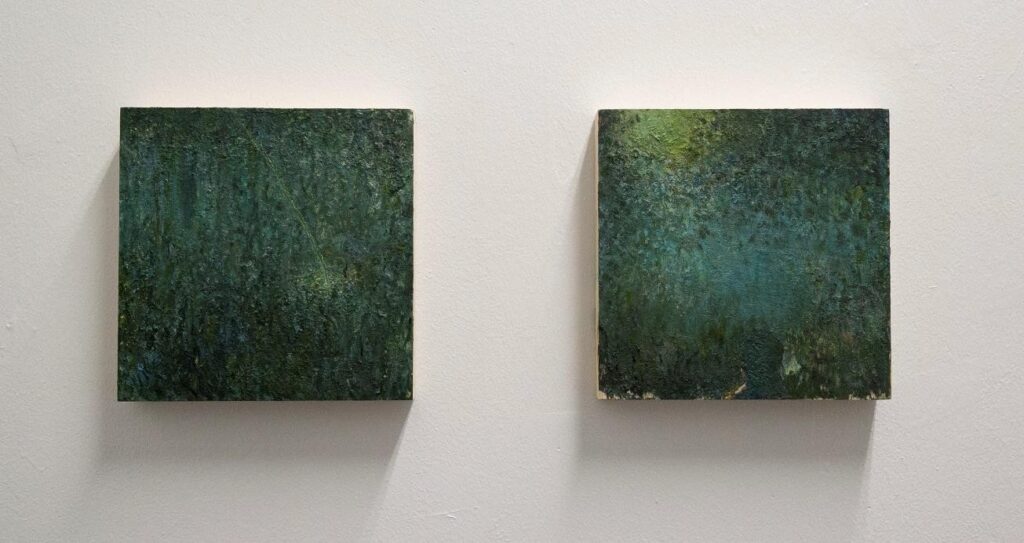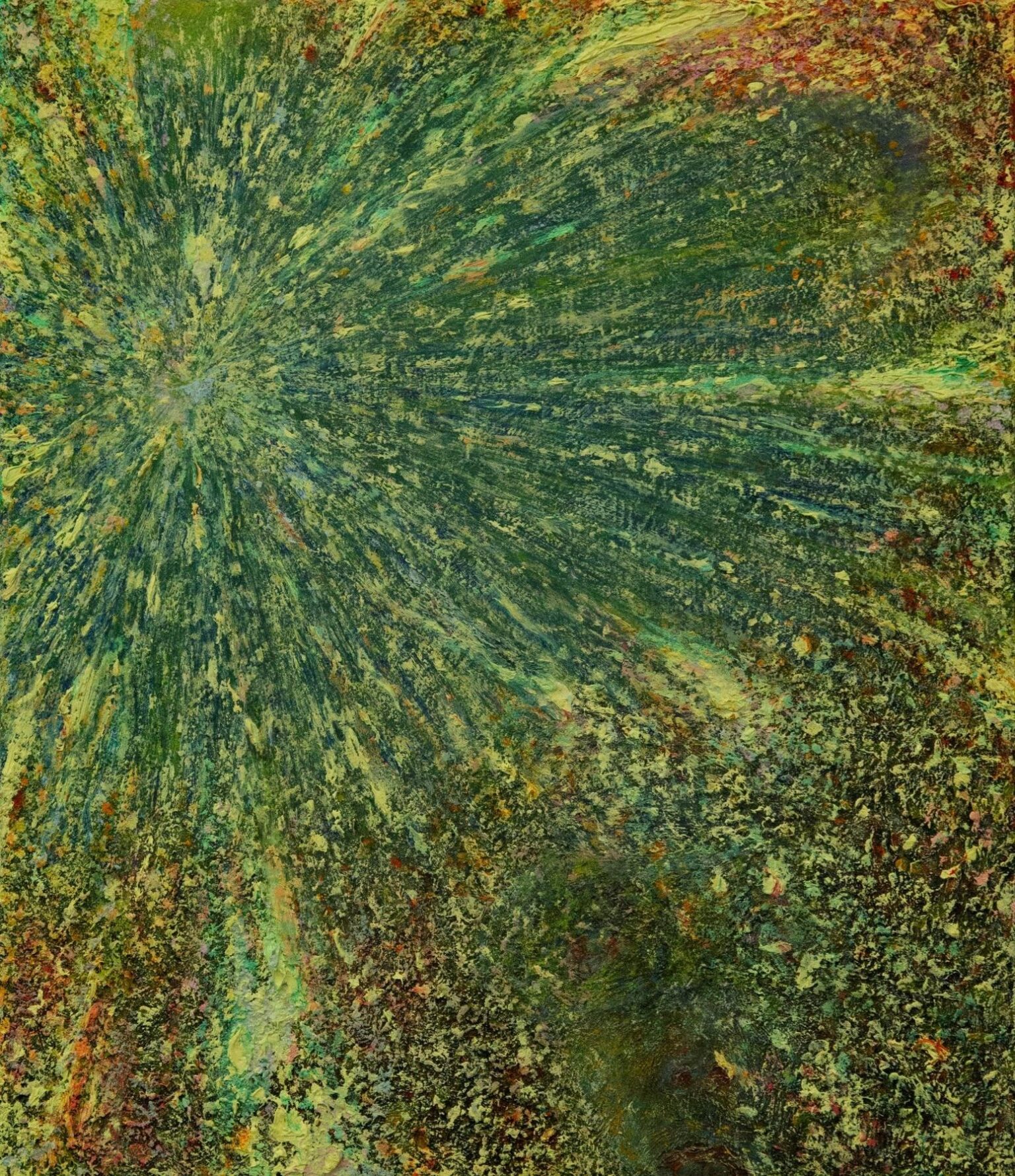

Finding Humanity at NADA: Darla Migan and Andy Wei Offer a Different Kind of Exchange
Her connection with Andy Wei makes perfect sense. Both are children of immigrants, shaped by the quiet ache of otherness in American childhood. For Darla, growing up in Atlanta in the ’90s, hip hop was frowned upon at home — a rejection of a certain segment of Black culture. For Andy, whose father was often absent chasing the American dream, emotional distance became the norm. When white families have similar dynamics, it’s framed as ambition. For immigrant families, it’s often judged or pathologized. Darla and Andy have turned those experiences into something generative. Darla offers her time and presence; Andy, his texture and tenderness in paint.
Walking up to one of Andy Wei’s paintings feels like rubbing your eyes — are you seeing this right? His work demands you pause, reflect, recalibrate. He’s Mathew Wong, he’s Basquiat, he’s staring into Van Gogh’s severed ear, the way René Ricard once described. His paintings are grippy, fuzzy, haptic events that thrum with human emotion. He understands painting as a transference of the human condition — and his canvases hold that charge.
This newest body of work was shaped by distance. In early 2020, Andy traveled to Qingdao, China — his family’s homeland — and found himself stranded there for nearly two years due to the pandemic. That time, both isolating and grounding, shifted his work. The gestural impasto of his pre-pandemic paintings gave way to something more atmospheric, dreamlike, emotionally layered. He describes experiencing intimacy through distance — romantic, familial, cultural. “Even in China,” he says, “I was referred to by my original name, which felt like another kind of othering.”
There’s a sense that all of his paintings are portraits. In Curtains A Fly, a fly hovers in the upper left-hand corner, while a face — or spirit — looms on the right. The curtains act like a spider web, trapping the viewer inside, much like a quarantine. But through the window
